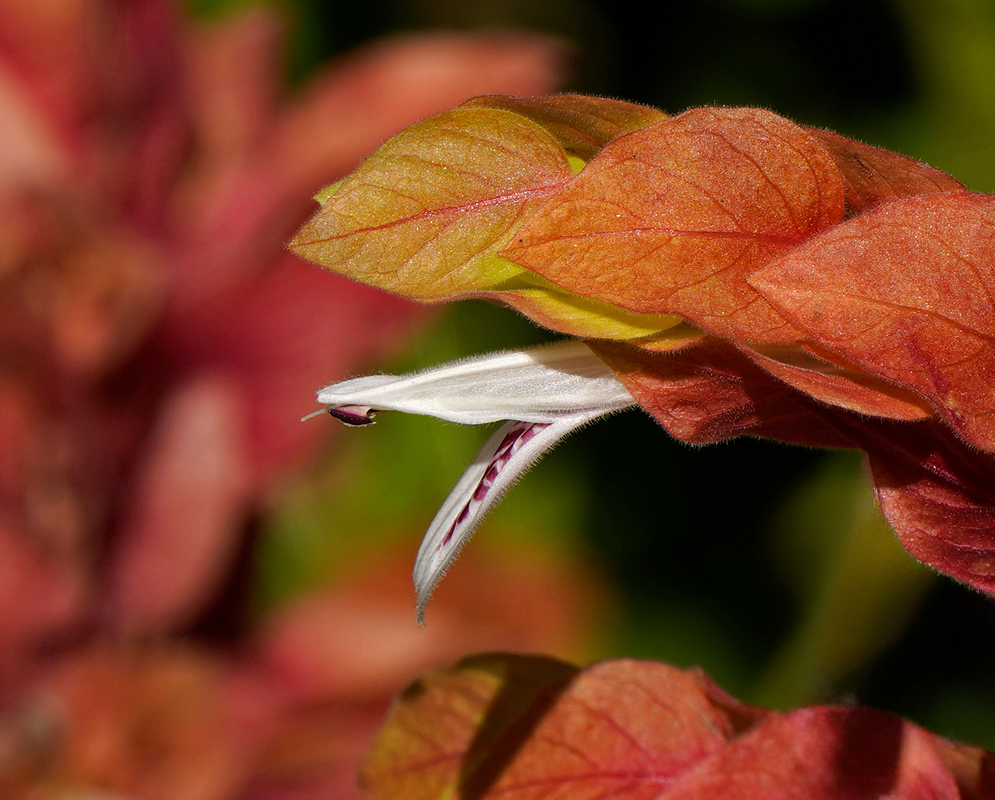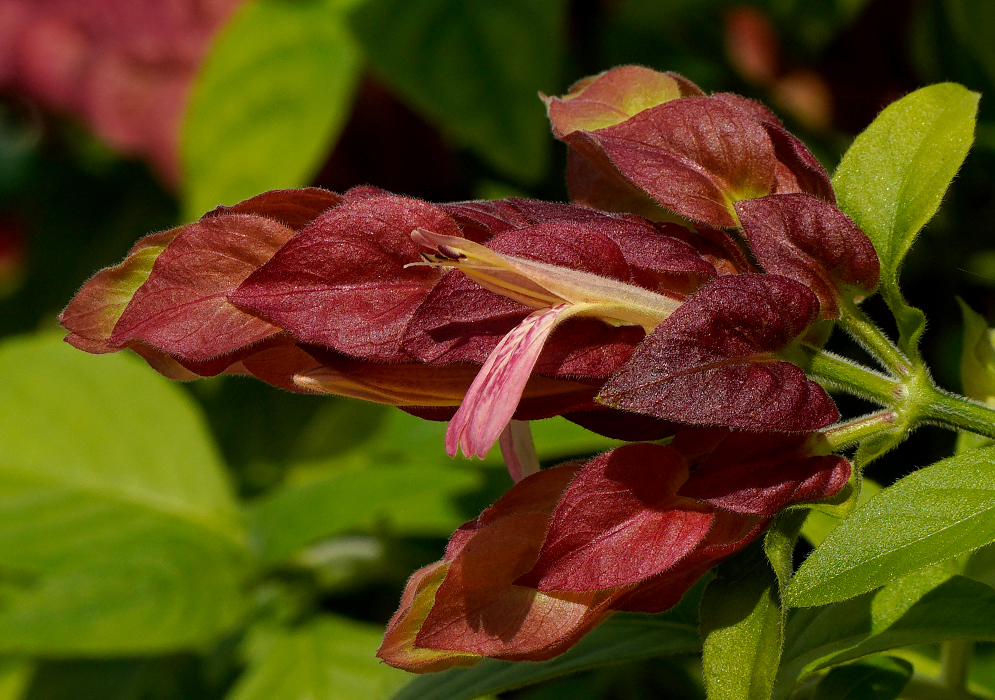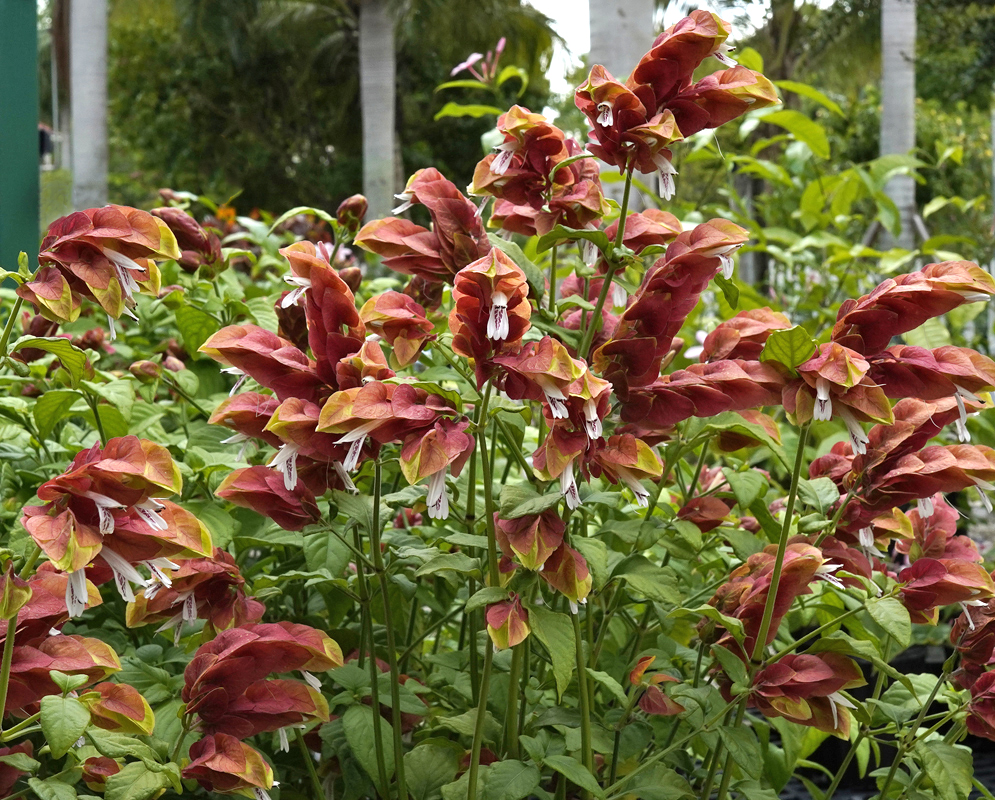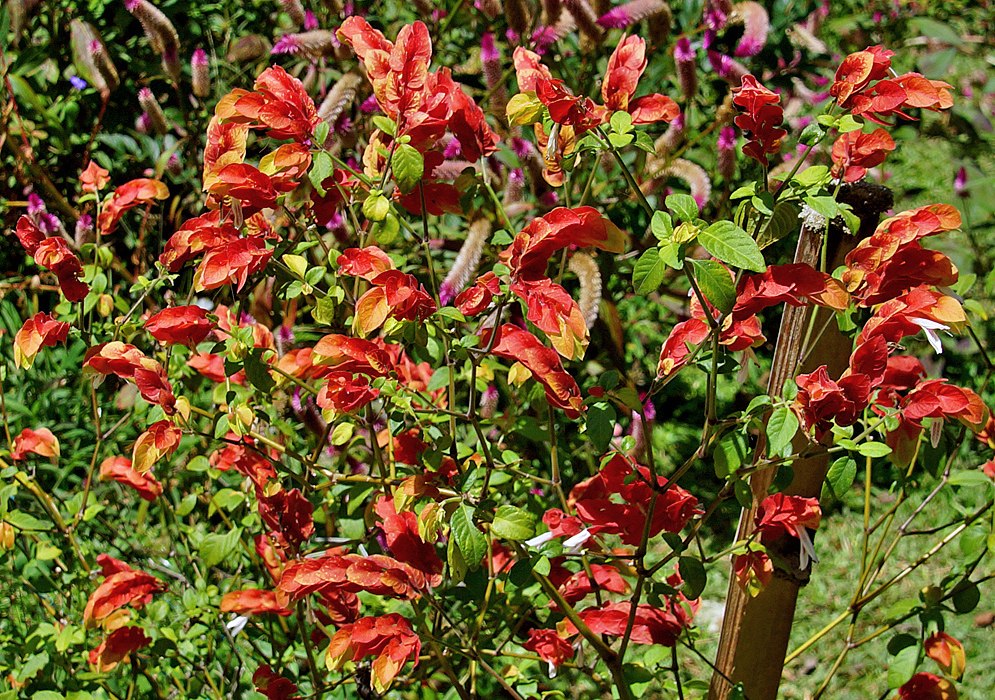This post has 11 Simple Fields-fields attached. Show fields.
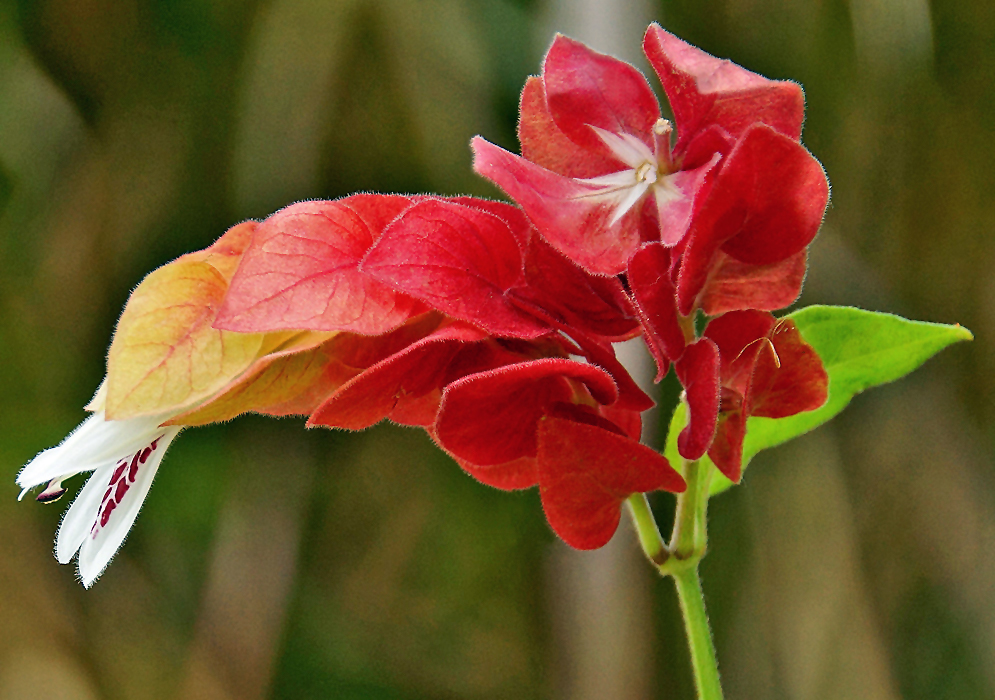
Native to eastern Mexico, particularly, this evergreen shrub thrives in humid, frost-free environments and is widely grown as an ornamental in gardens throughout the southern United States, India, Southeast Asia, and tropical South America. It forms an upright, branching habit that can reach 3 to 5 feet in height, with arching stems that create a spreading mound. Its distinctive flowering structure consists of drooping, shrimp-like bracts that range in color from brick-red to coppery orange, concealing slender, tubular white flowers that protrude and curve slightly downward; these flowers are usually marked with purple streaks or speckles on the lower lobe and are designed to attract hummingbirds and butterflies. Bracts persist well beyond the flowering period and shift in hue as they age, often darkening or taking on pink and reddish tones, creating an extended ornamental effect. In the United States, it has been recognized with the Award of Garden Merit by the Royal Horticultural Society due to its consistent performance and value in home gardens. One popular cultivar, ‘Yellow Queen,’ features pale yellow bracts and is widely grown in Florida. Photographed in Colombia and Florida.
